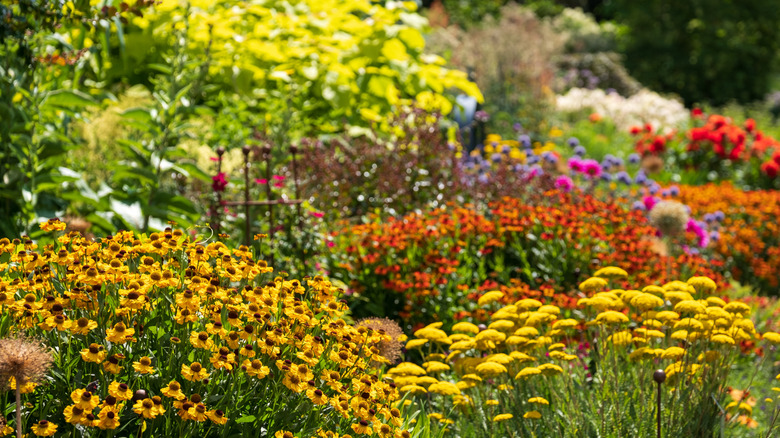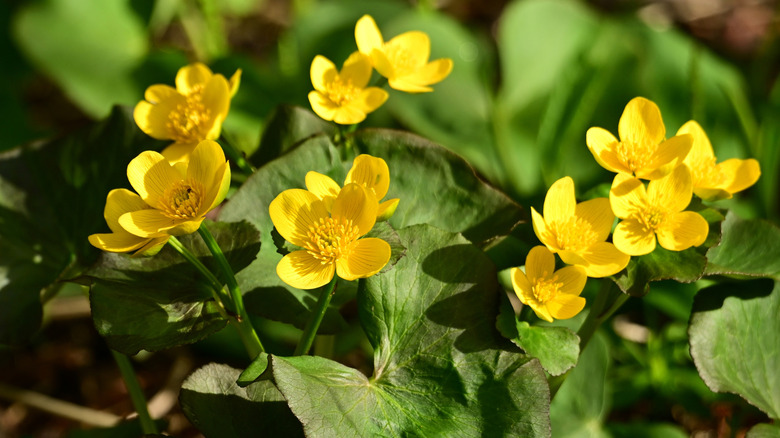The Pollinator-Attracting Perennial That Makes A Great Ground Cover
You may have seen the charming yellow blooms of marsh marigolds (Caltha palustris) bringing color to marshes, wet woodlands, and swamps throughout North America. But did you know that you can grow this native plant in your garden for ground cover? With a spread of around 1.5 feet, marsh marigolds have a creeping form that will extend across the ground to protect the soil and naturally help prevent pesky weeds in the garden. When they flower in April, May, and June, marsh marigolds also attract pollinators into your garden. Hummingbirds and bees are both drawn to its nectar, and it is pollinated by hoverflies.
Marsh marigolds are suitable to grow in USDA Hardiness Zones 3 to 7. They are fairly low-maintenance plants and can spread by themselves in your yard by seed. You can also easily propagate marsh marigolds yourself through division once the plants have matured. However, make sure to use gloves if you decide to do this, as the plant can cause irritation to the skin. Its readiness to multiply makes marsh marigold a fantastic flowering ground cover plant that will help your garden year after year.
How to plant marsh marigolds as ground cover
As the name suggests, marsh marigolds need moist, boggy soil. If you have a pond, planting them near it would be perfect. They can be grown in full sun or partial shade, but too much heat and sunlight can make them go dormant. When planting marsh marigolds as ground cover, it is best to purchase plugs over seeds. This is because it is hard to tell the difference between a seedling and a weed when stems start to sprout, so you may accidentally weed out the marsh marigolds as they grow.
To prep the soil for successful planting, add some high-quality organic matter. This will help the marsh marigolds settle in and spread. You also need to remove any weeds from the area. Then dig holes deep enough for the root balls and place your marsh marigolds in. You want to give them enough space for their maximum spread, which is 1.5 feet, as planting them too close together can cause competition. Planting in a staggered pattern is a great way to promote quicker coverage.
Once you have planted your marsh marigolds, you need to keep an eye on them to help them establish themselves. Ensure they are watered regularly and divide crowded plants while they are dormant to keep them healthy and happy. Soon, your marsh marigolds will create a carpet of yellow blooms and make your garden buzz with life. Note that while some parts of the plant are edible, it is toxic when eaten raw.

